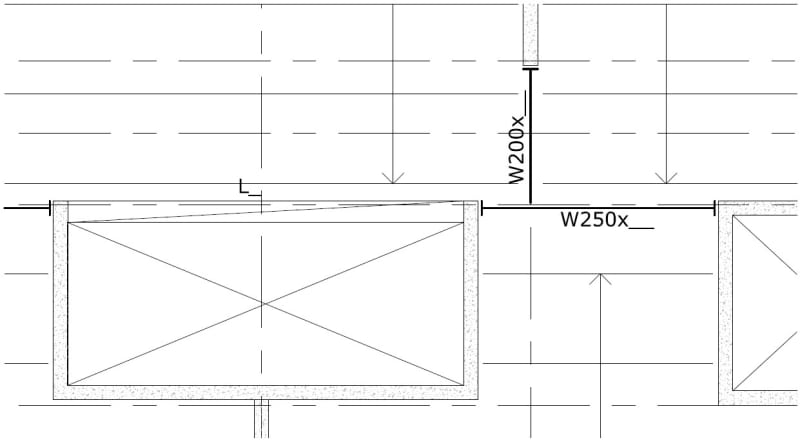Are there any guidelines on how best to design embedded plates for steel beams located on a corner of a stairwell or elevator shaft that is acting as a shear wall and therefore contains concentrated reinforcement?
What should I be considering when looking at this situation? I feel like there is a lot going on in a small space (4-8 vertical bars, ties at 10" or 12", an embedded plate taking away cross-section, stud/strap anchors for the plate).
I know that I'll have to carefully consider the constructability of the area, making sure that strap anchors are offset vertically from the ties.
Any words of wisdom of caution? Best practices?
I've attached a picture in case my question isn't clear enough.

What should I be considering when looking at this situation? I feel like there is a lot going on in a small space (4-8 vertical bars, ties at 10" or 12", an embedded plate taking away cross-section, stud/strap anchors for the plate).
I know that I'll have to carefully consider the constructability of the area, making sure that strap anchors are offset vertically from the ties.
Any words of wisdom of caution? Best practices?
I've attached a picture in case my question isn't clear enough.

